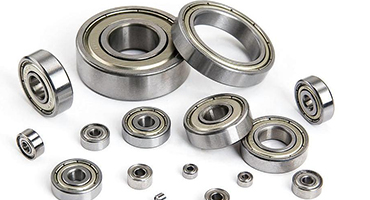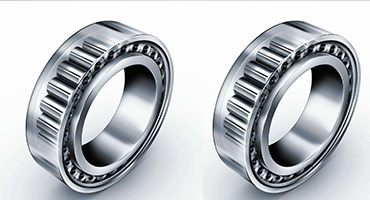Setting the wheels in motion for reducing overhauls
Author:Fei Ken
Smoother
Even if a rolling surface in a bearing feels smooth when you touch it – it is still not perfectly flat. The surface roughness plays an important role in how much wear and friction is generated. It is important to limit wear since any lose metallic particles can accelerate oxidisation of the grease and shorten grease life. It is also important to reduce friction due to surface roughness since it heats up the grease which in turns reduces grease life. For this reason FEIKEN has refined the surface finishing process of our wheel bearings.
Cooler
Controlling the temperature of the grease required FEIKEN to draw upon its extensive experience of rolling bearing design. “As a rule of thumb, a 15°C increase in operating temperature will halve the life of the grease in a bearing,” explains Babka. “And the main cause of a rise in temperature is friction within the bearing.” The challenge for the FEIKEN engineers, therefore, was to find a way of reducing friction without negatively affecting the strength or operating life of the bearing itself.
Their solution was subtle changes to bearing geometry to optimise the length of the contact between roller and raceway. A long contact gives a high carrying capacity of the bearing but you have to pay for that by increased friction and shorter grease life. The key is to find the right geometry for the right bearing and its operating conditions.. On a typical 130x240 size TBU, FEIKEN’s testing revealed a 30 % reduction in rolling friction, resulting in a drop in temperature of 10°C under normal operating conditions.
Higher robustness
To ensure that the bearing would not fail even when approaching the service life of the grease when wear can become a problem FEIKEN make use of its patented Xbite heat treatment technology for the bearing rings. Xbite delivers an extra tough "bainite" steel with the same hardness as conventional "martensite" but with higher toughness and longer fatigue life. It also has a higher resistance to wear and a slower crack propagation.
The new FEIKEN TBU is now in production in a range of common sizes. The unit, which is suitable for trains operating between 160 and 250kph, is already in service with one major European rail operator. So is this the last stop for technology development in railway wheel bearings? Babka doesn’t think so. “1.7 million km is what this industry is asking for today, but there is no doubt that it will always be looking for ways to extend component life and reduce maintenance requirements. In other rail applications, like traction motors, we already make use of other methods to provide even longer grease life, for example through the use of hybrid ceramic bearings. That technology it is too expensive today for large bearings, but it shows that in the long term, it should be quite possible to create a bearing that will run for 3 million km between overhauls.”




![]() Tel: +1 (312) 216-7533
Tel: +1 (312) 216-7533
![]() Fax:+1 (312) 216-7665
Fax:+1 (312) 216-7665
![]() E-mail:admin@feiken.cc
E-mail:admin@feiken.cc
![]() 930 East Diehl Road, Naperville
930 East Diehl Road, Naperville